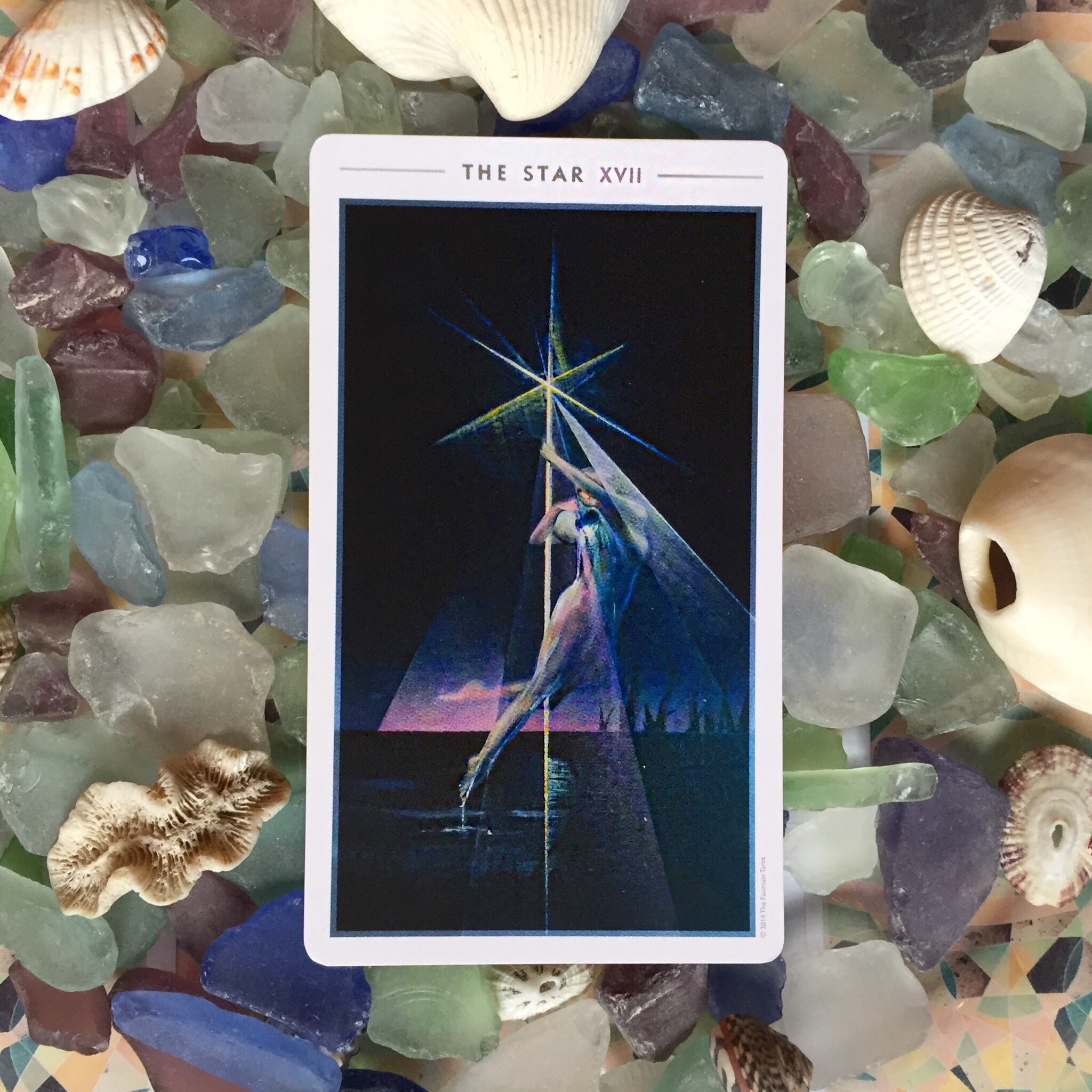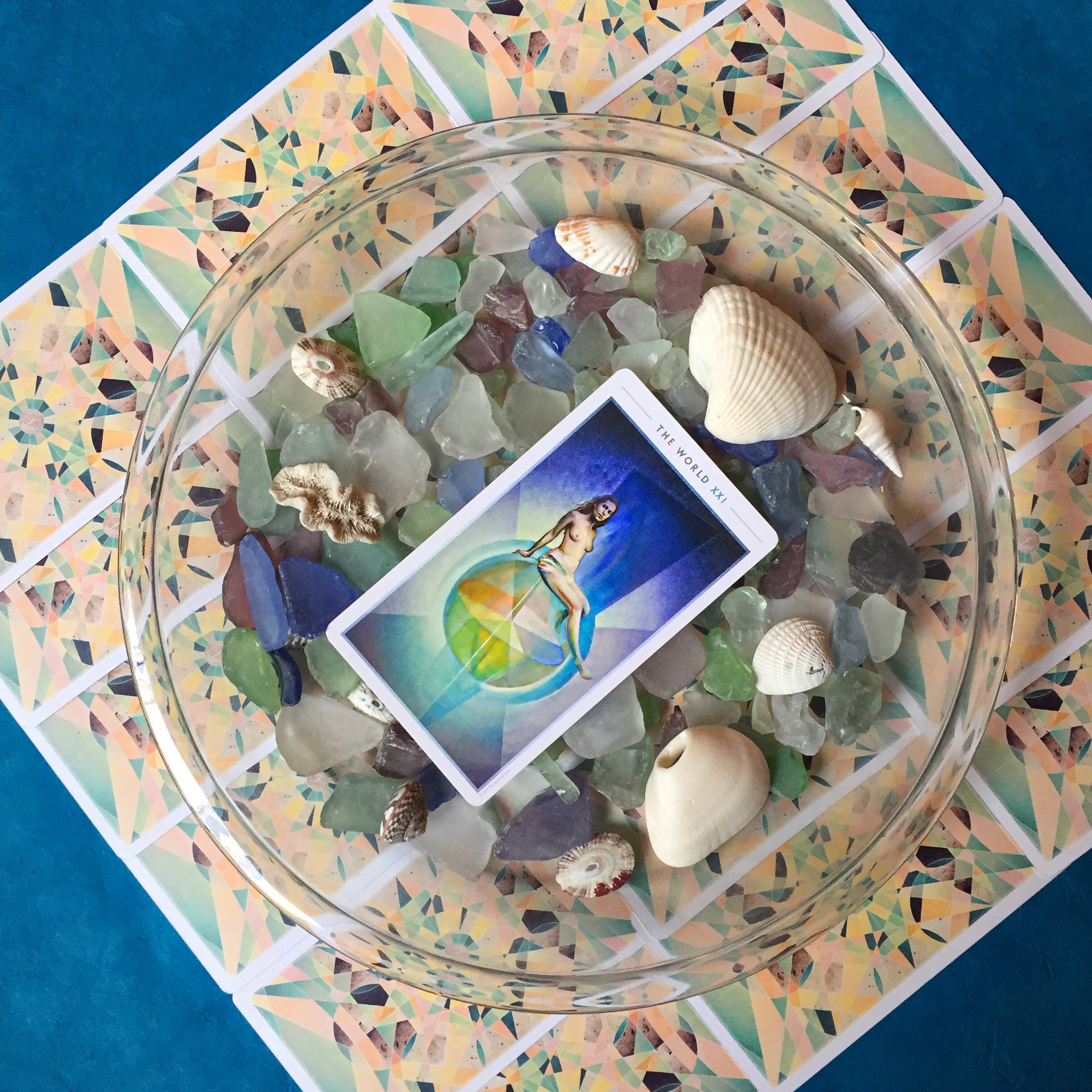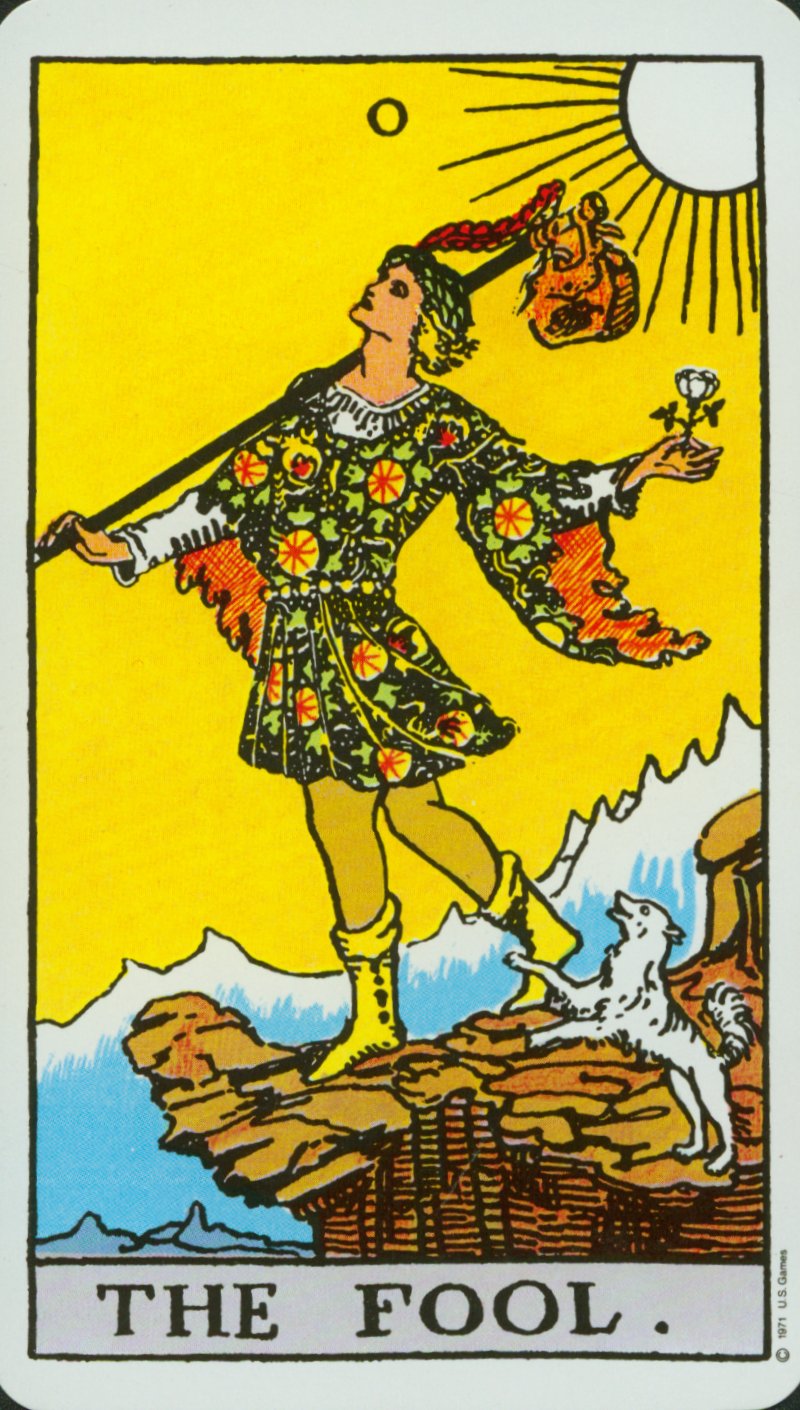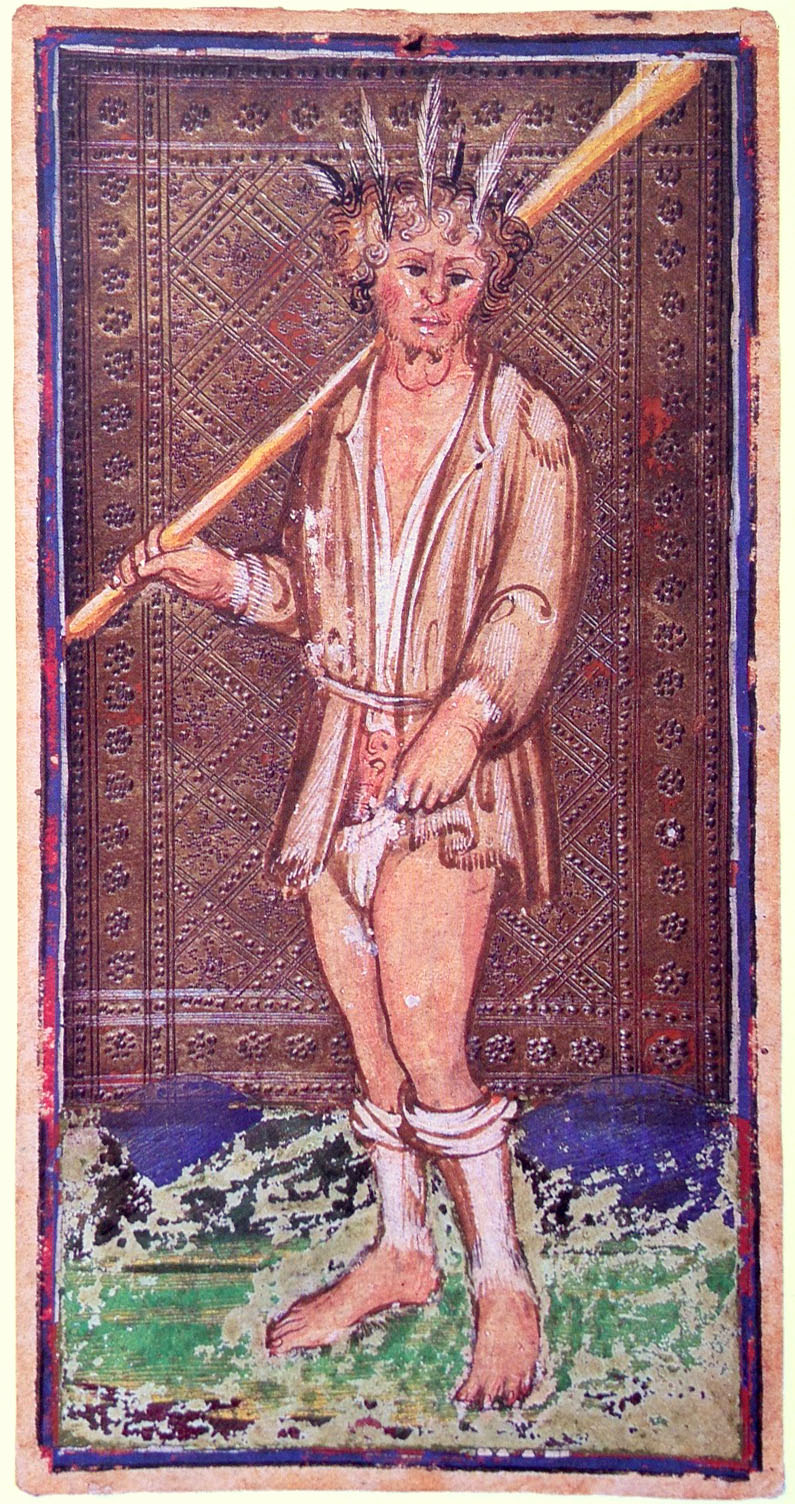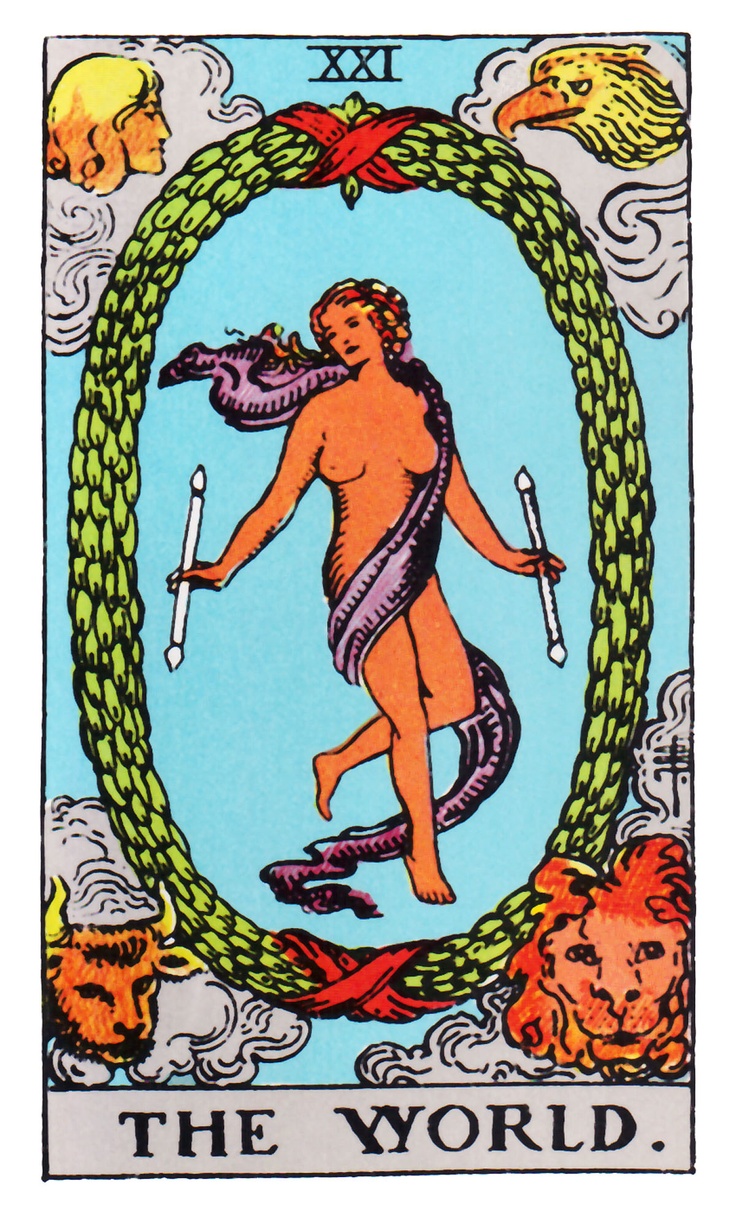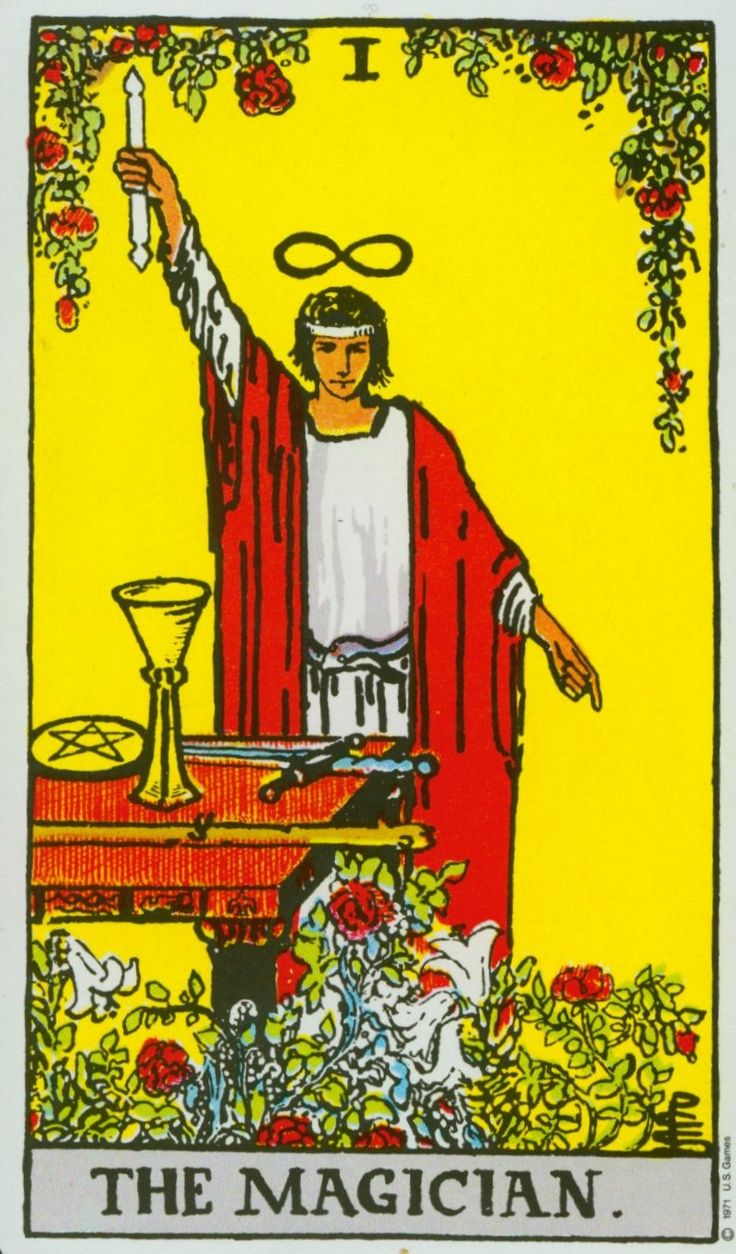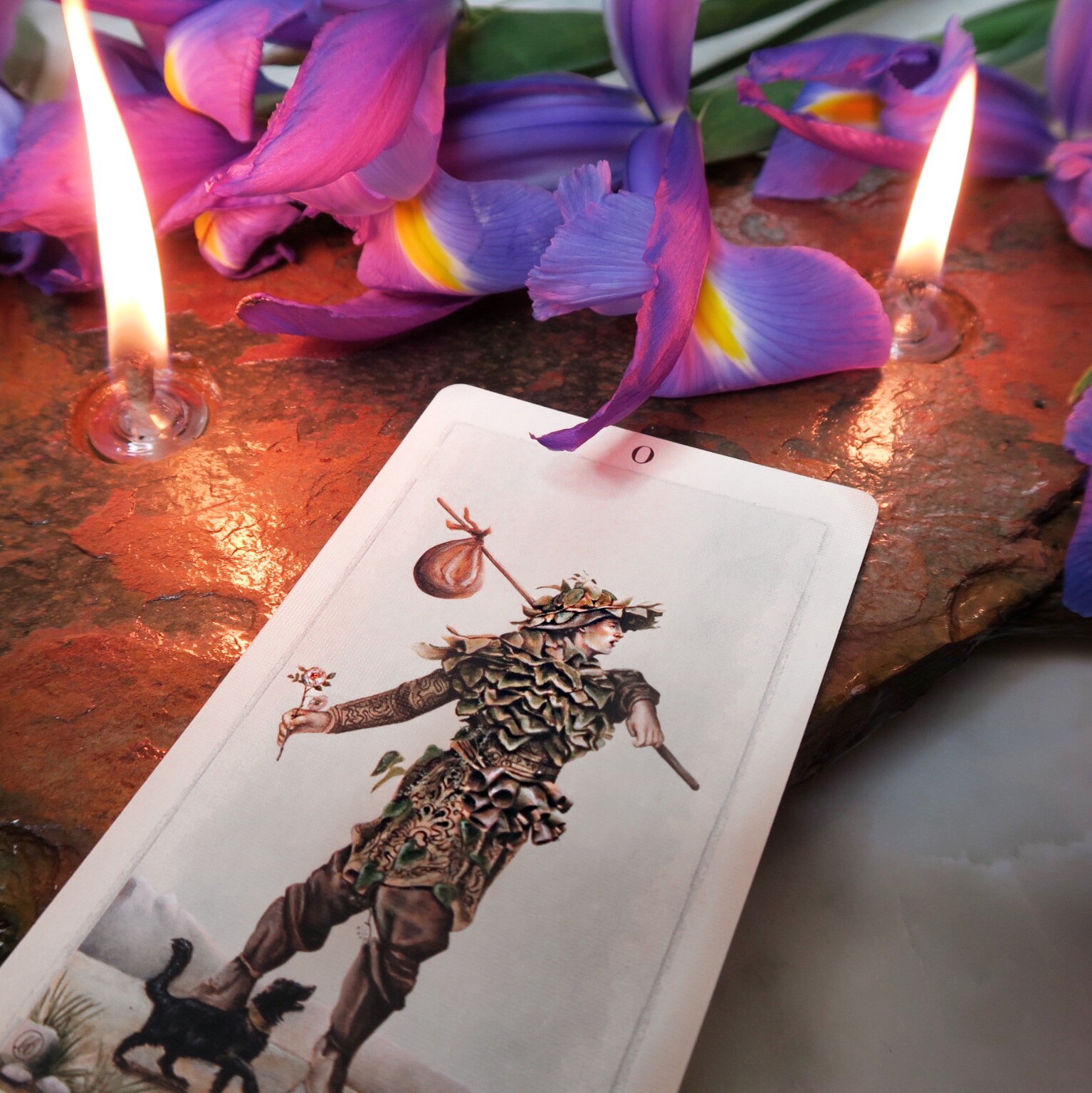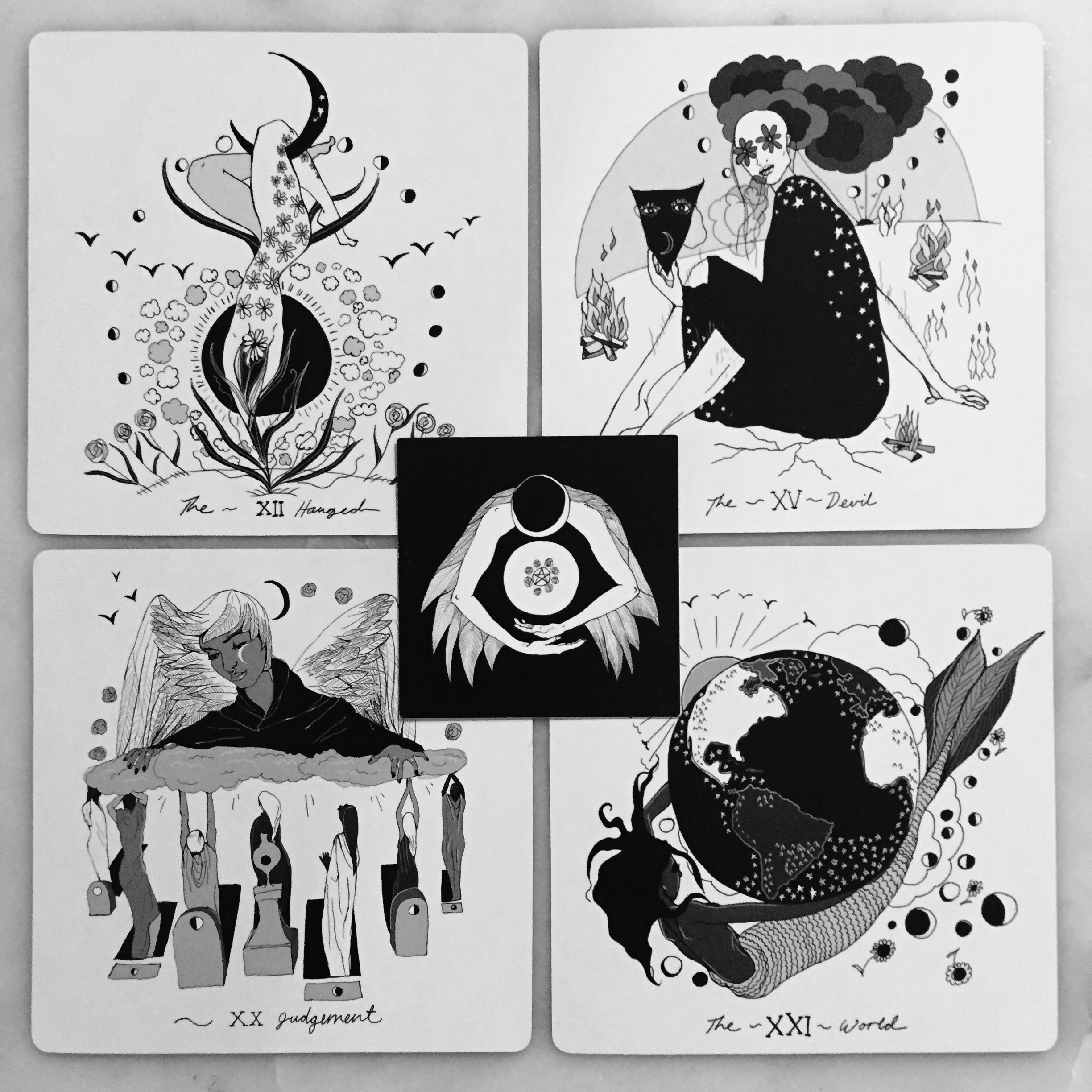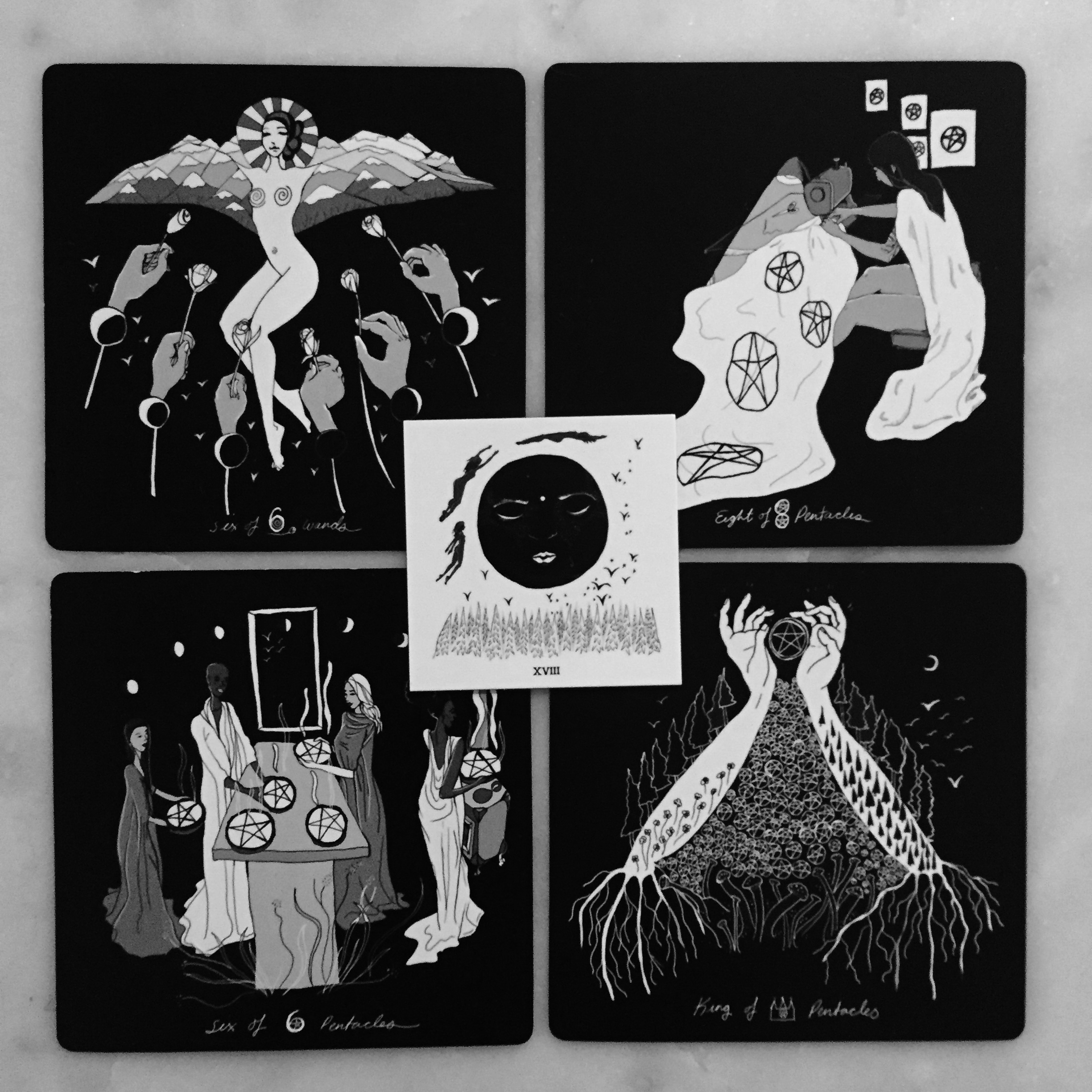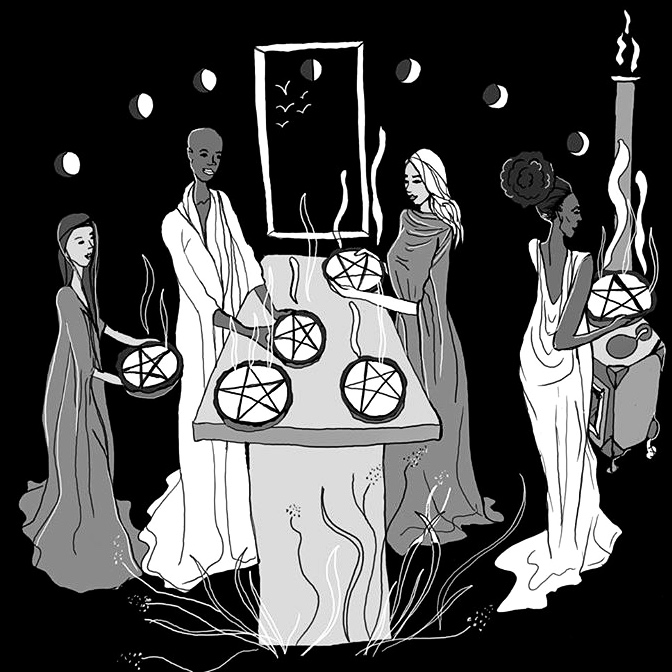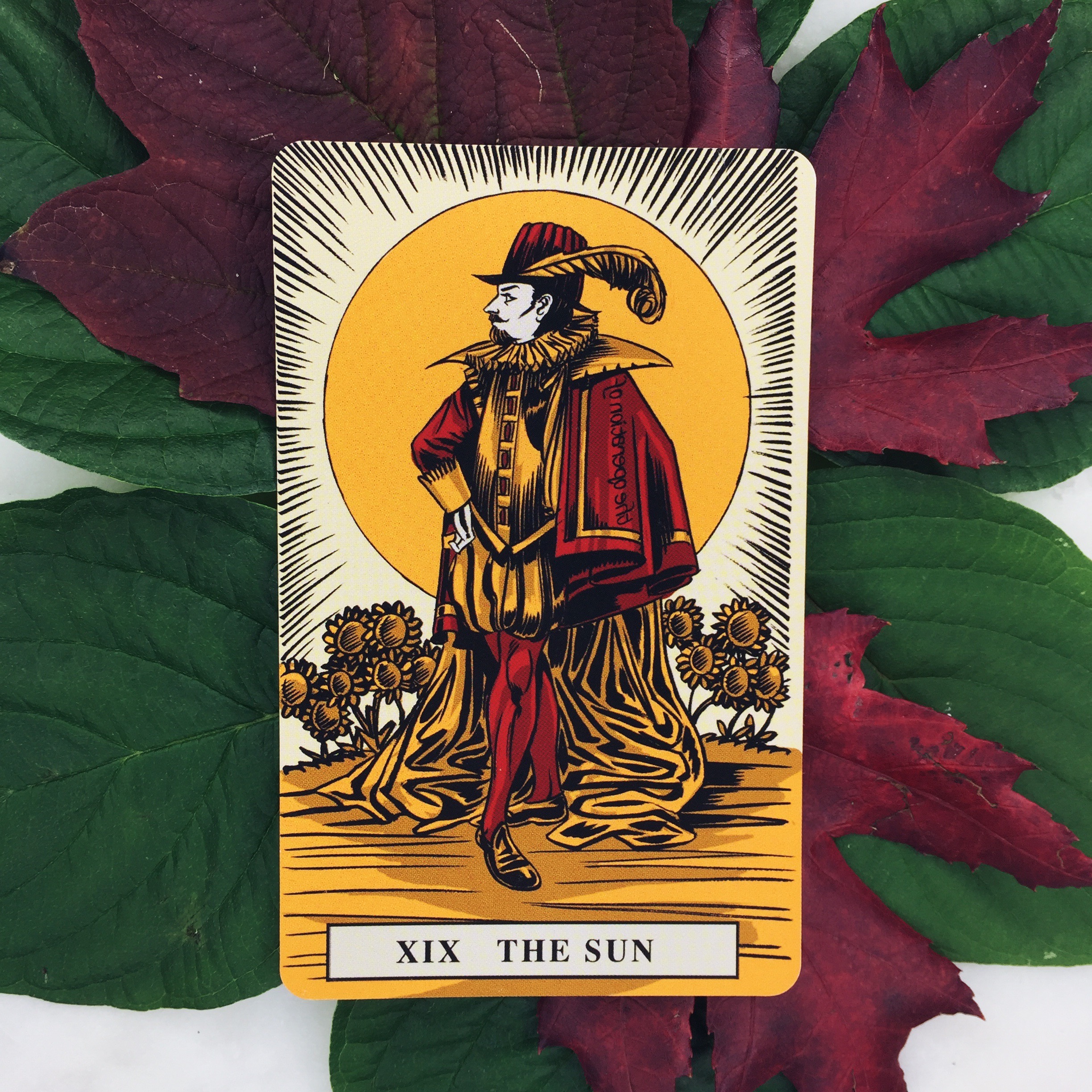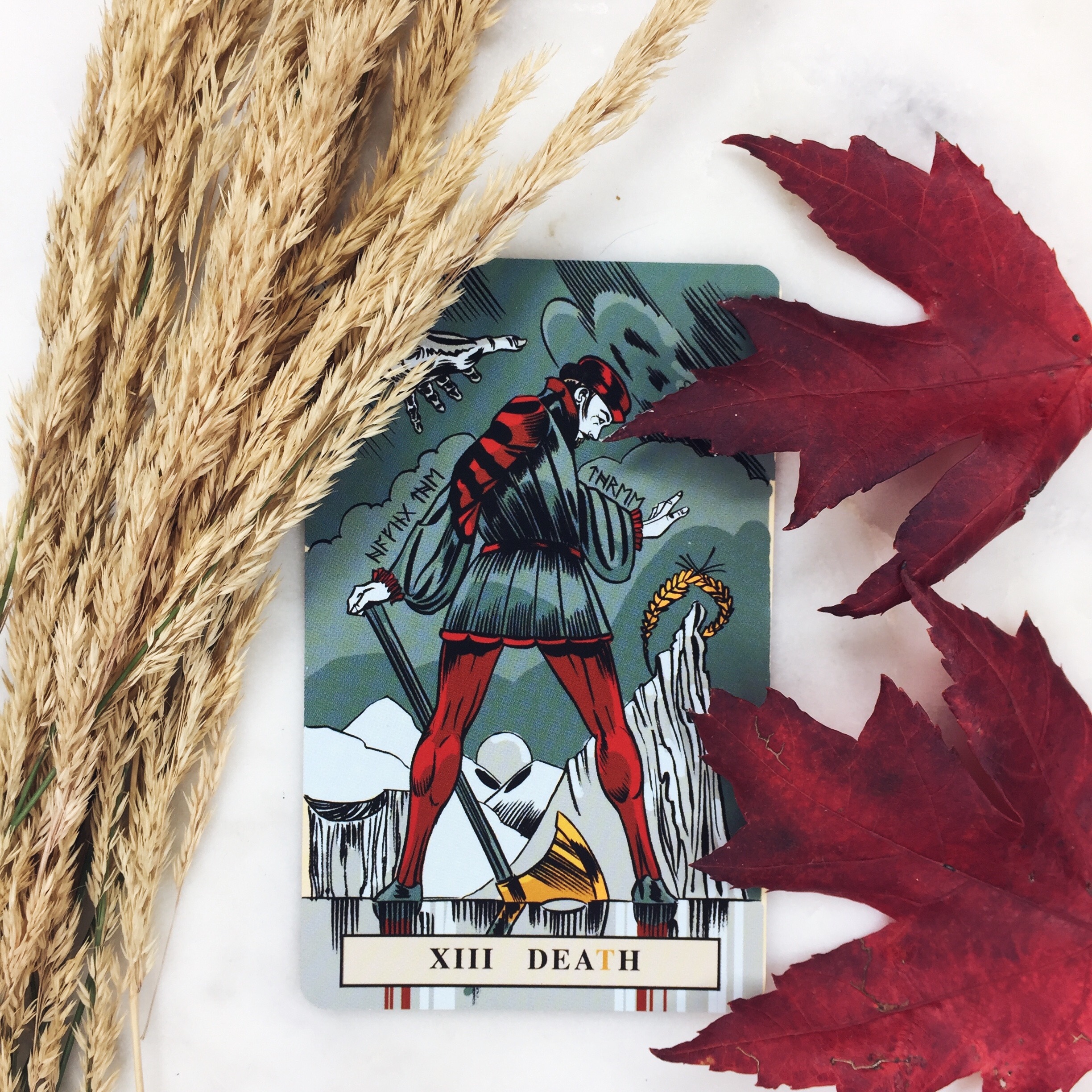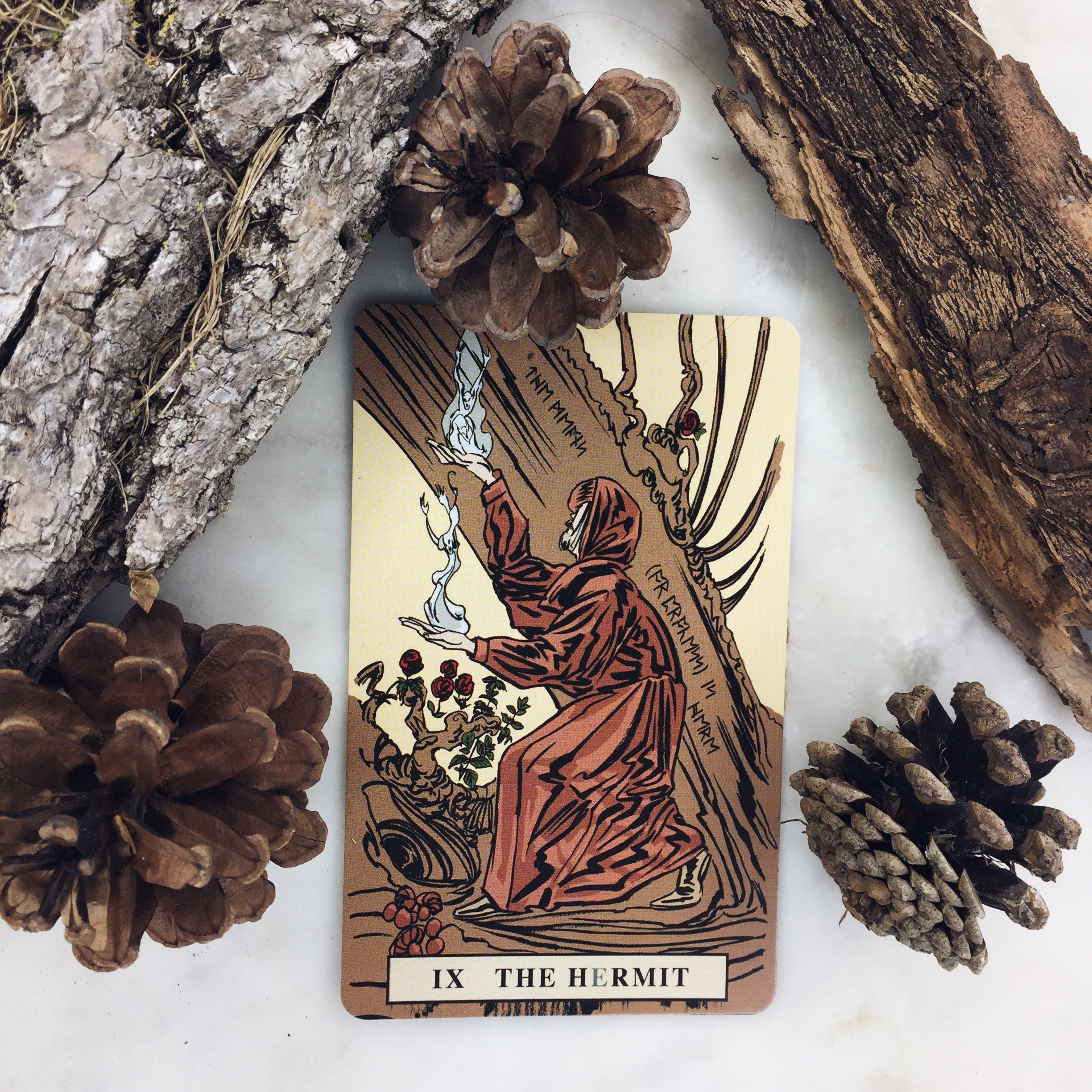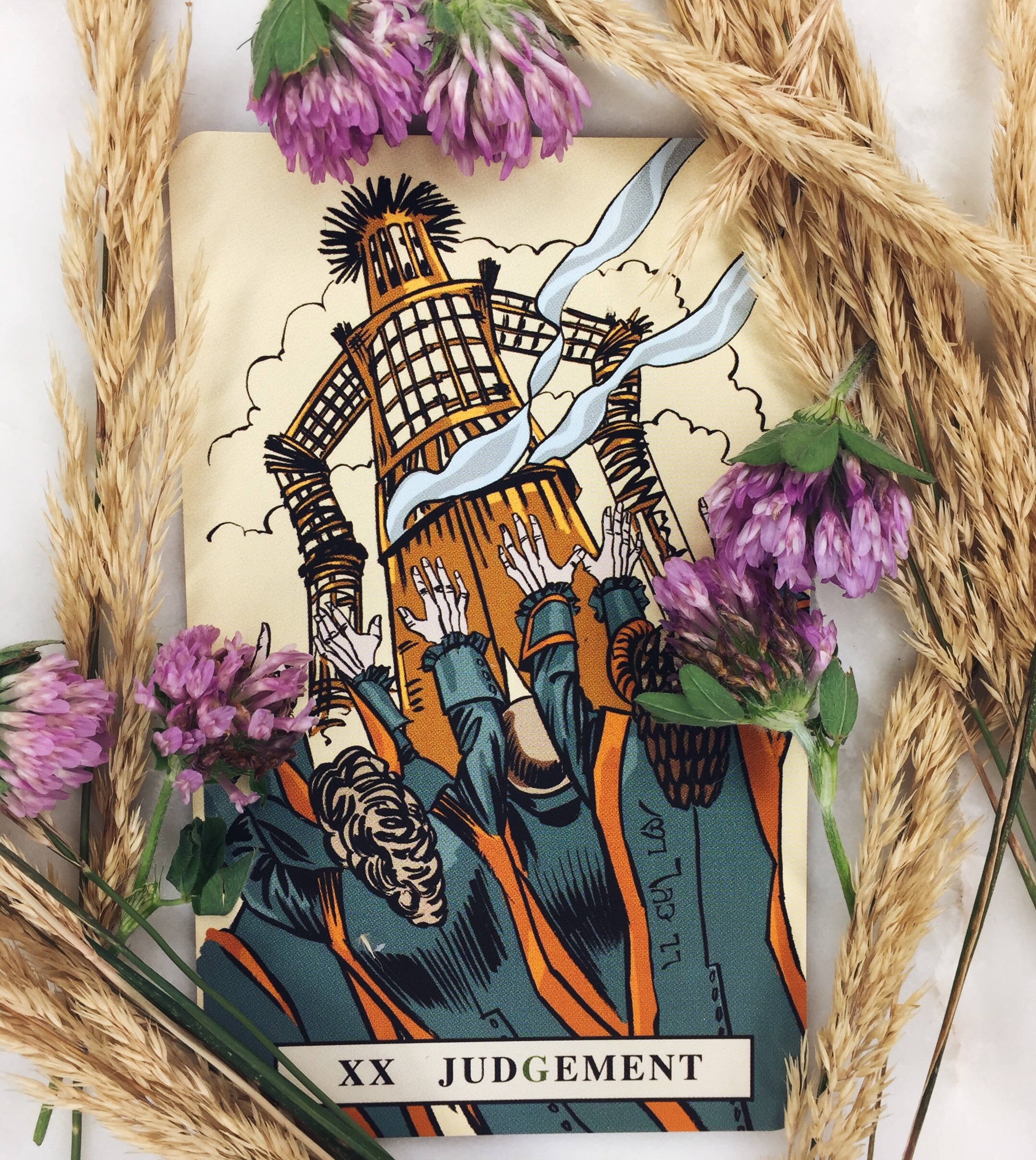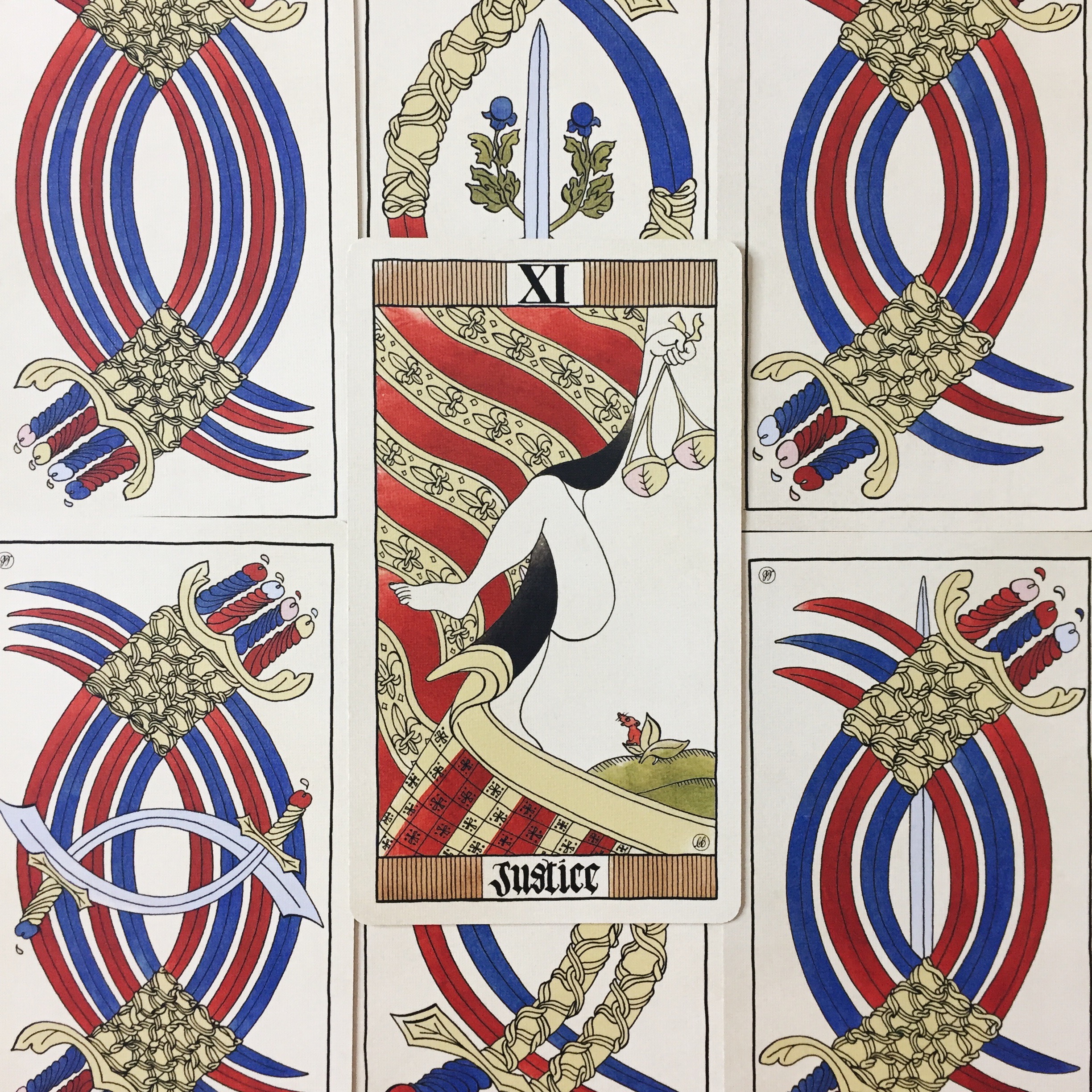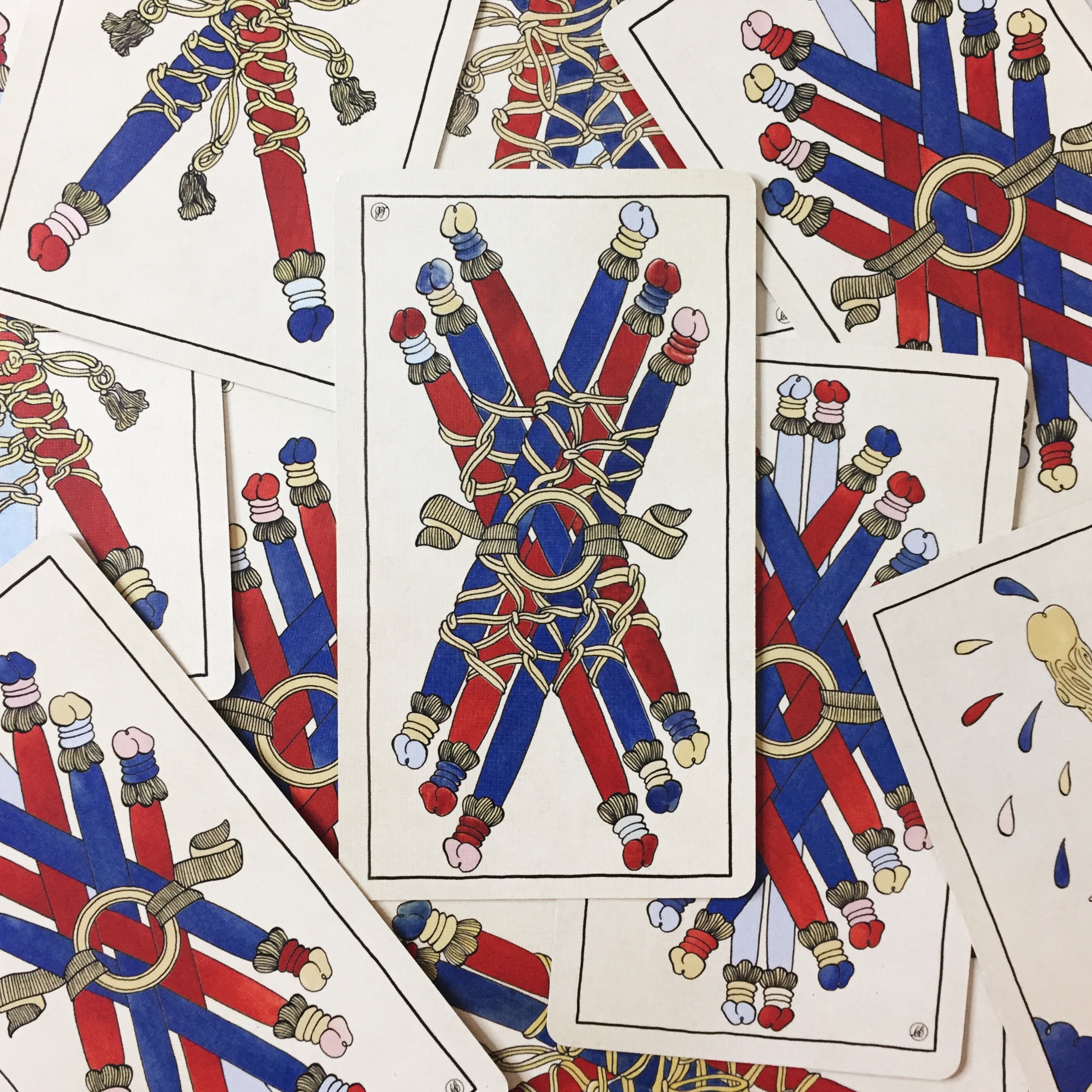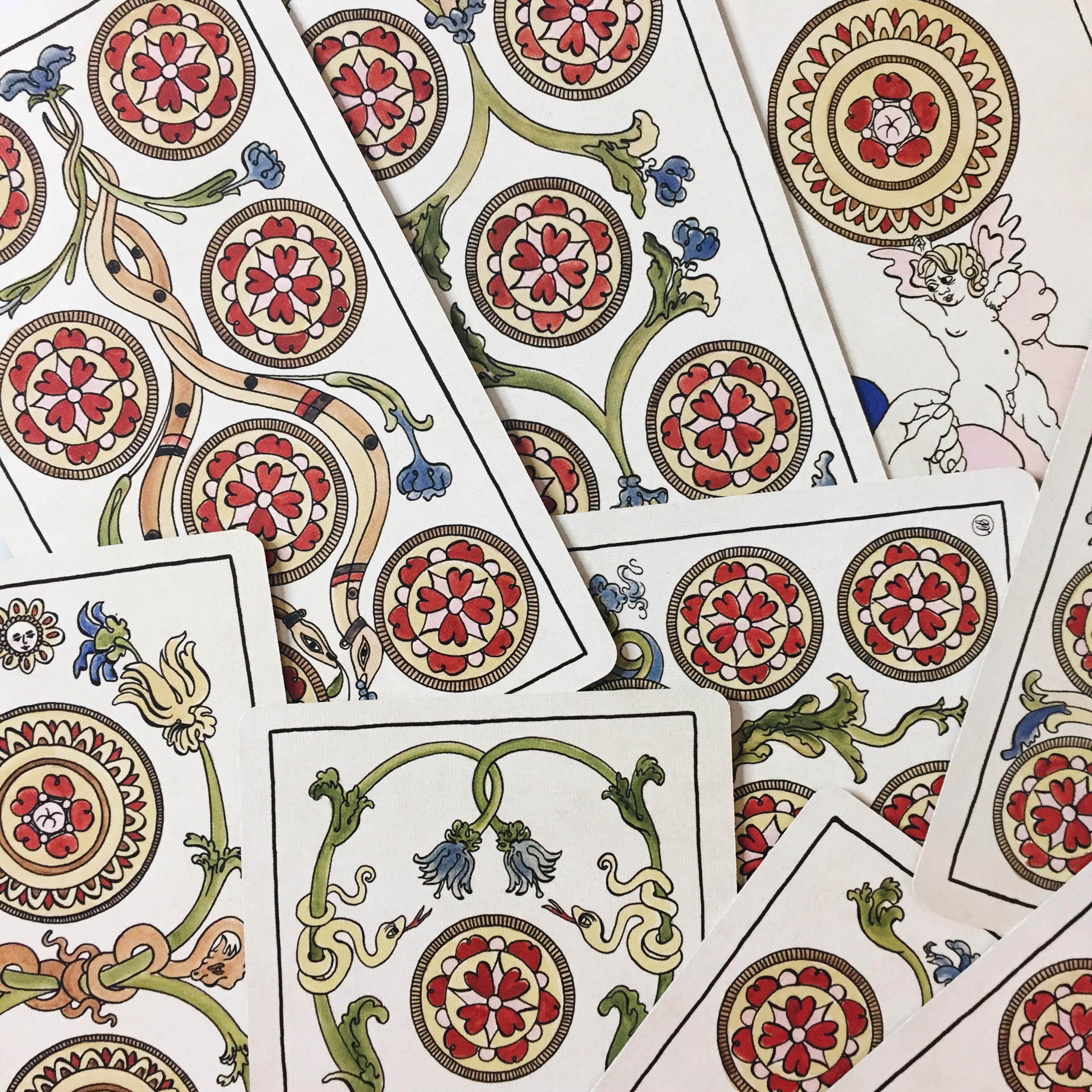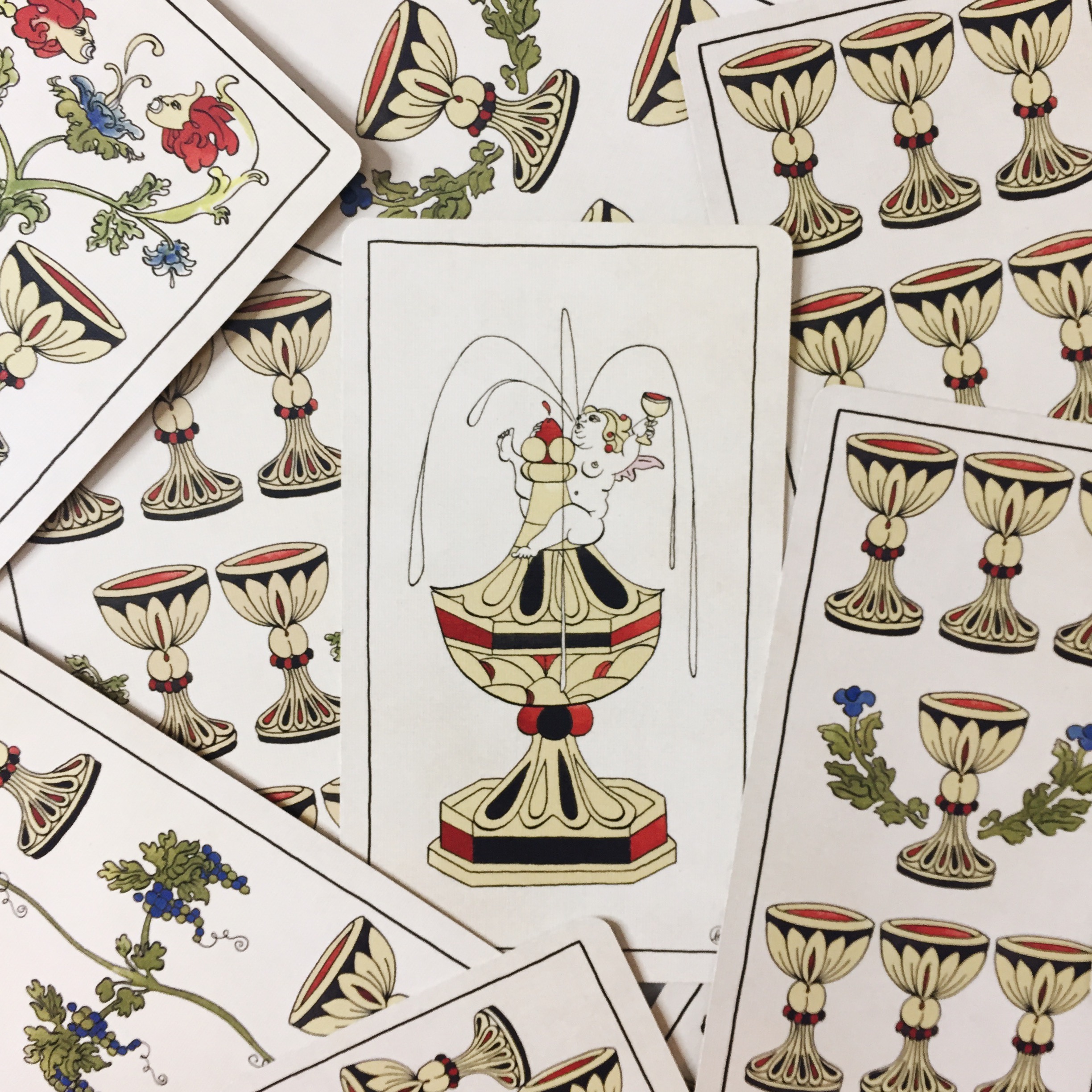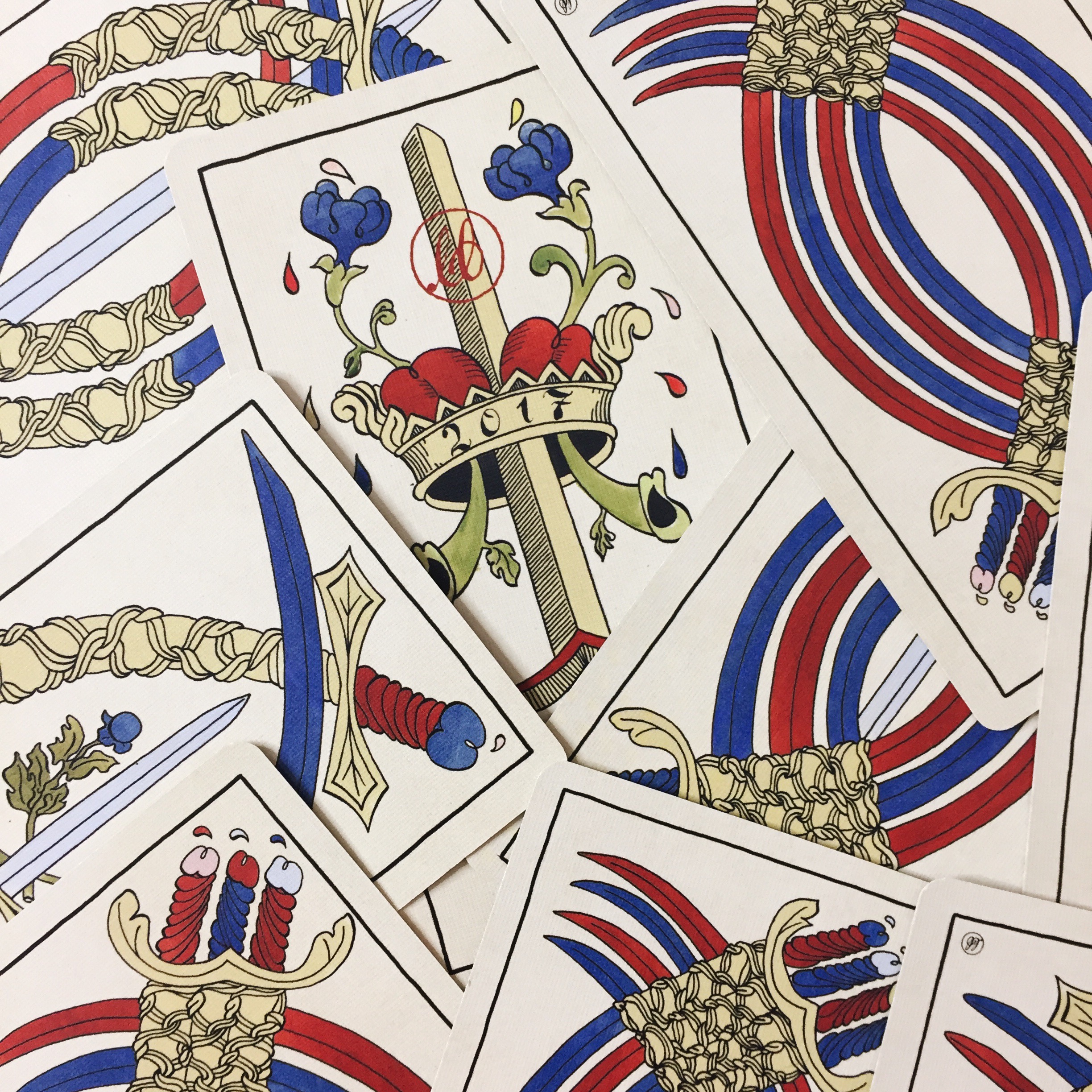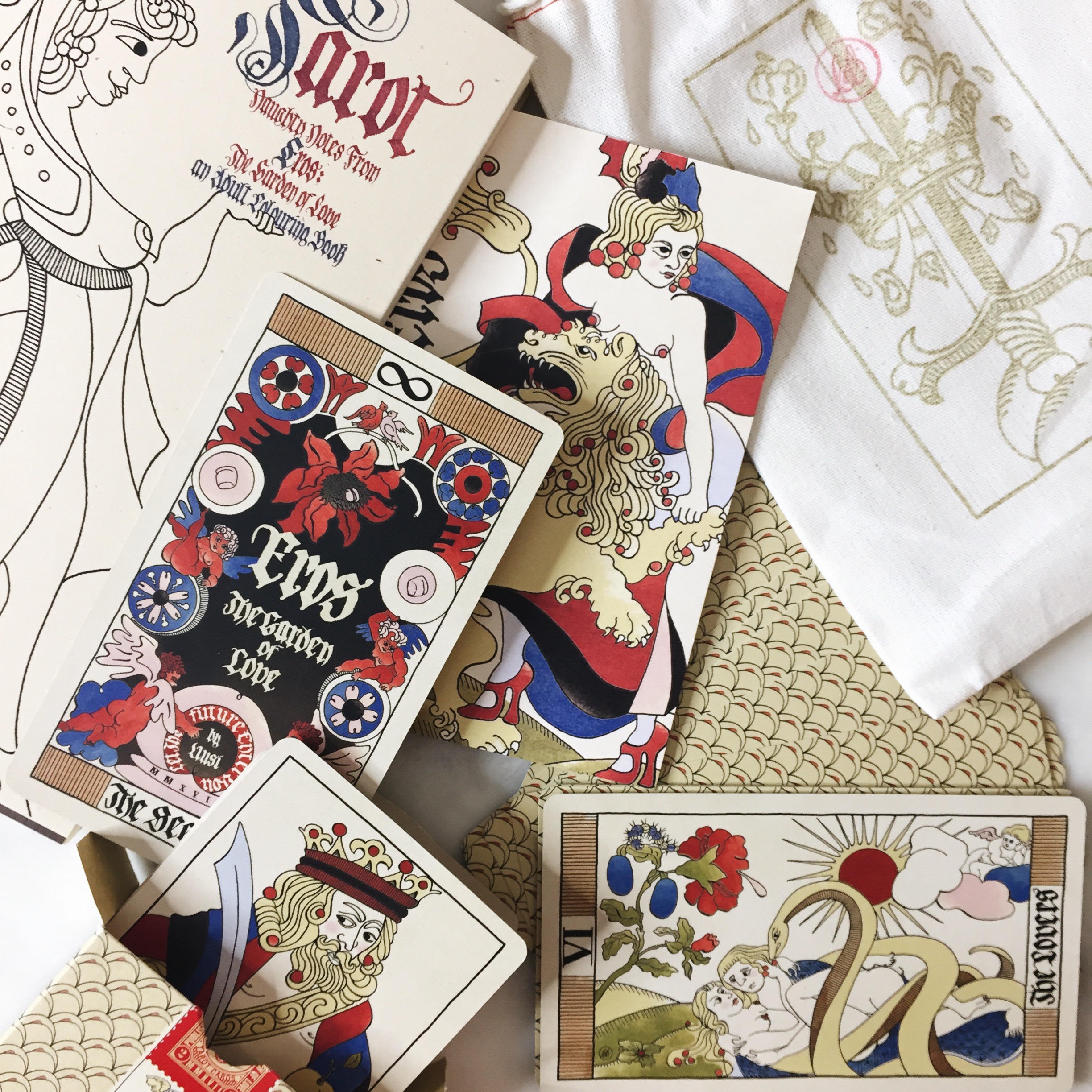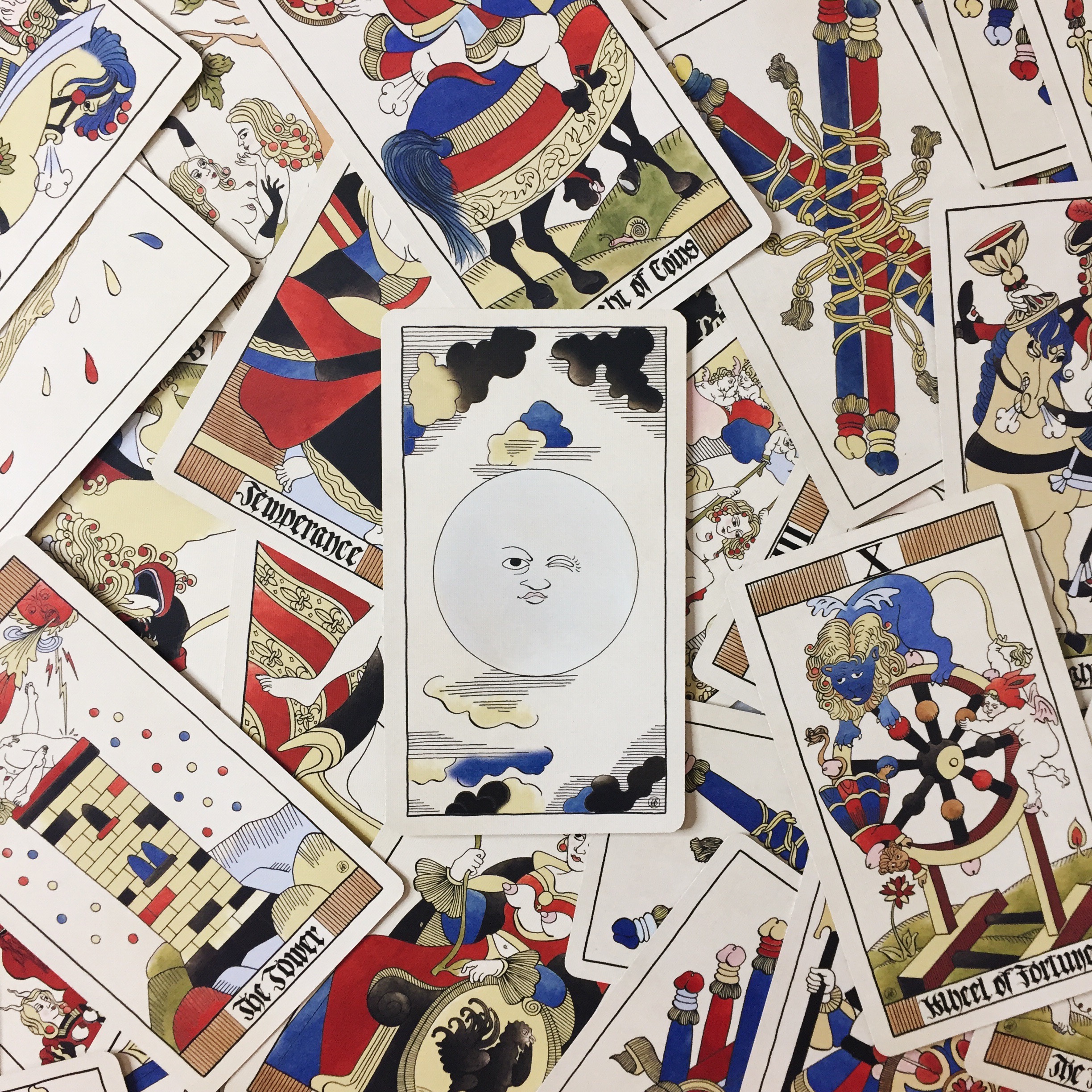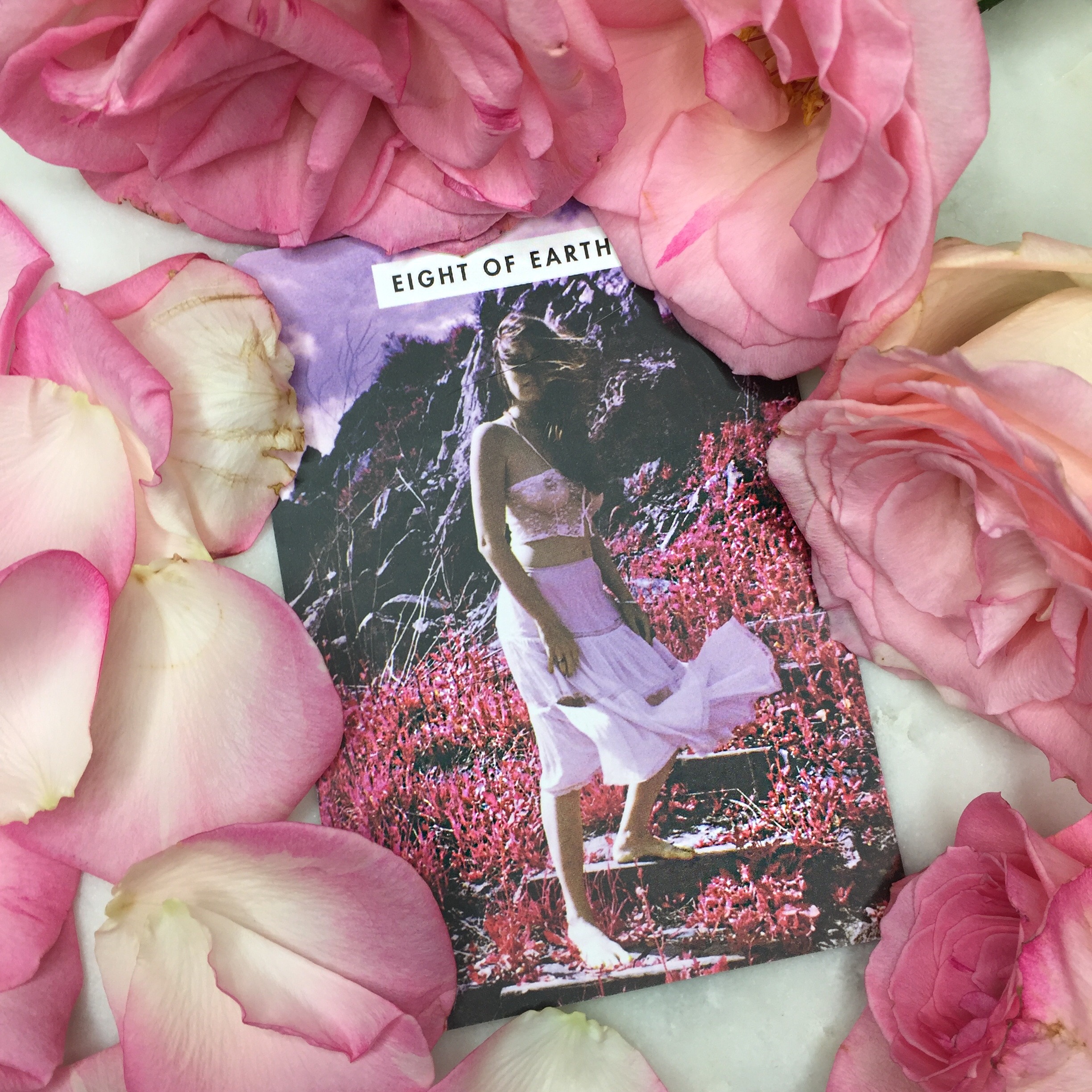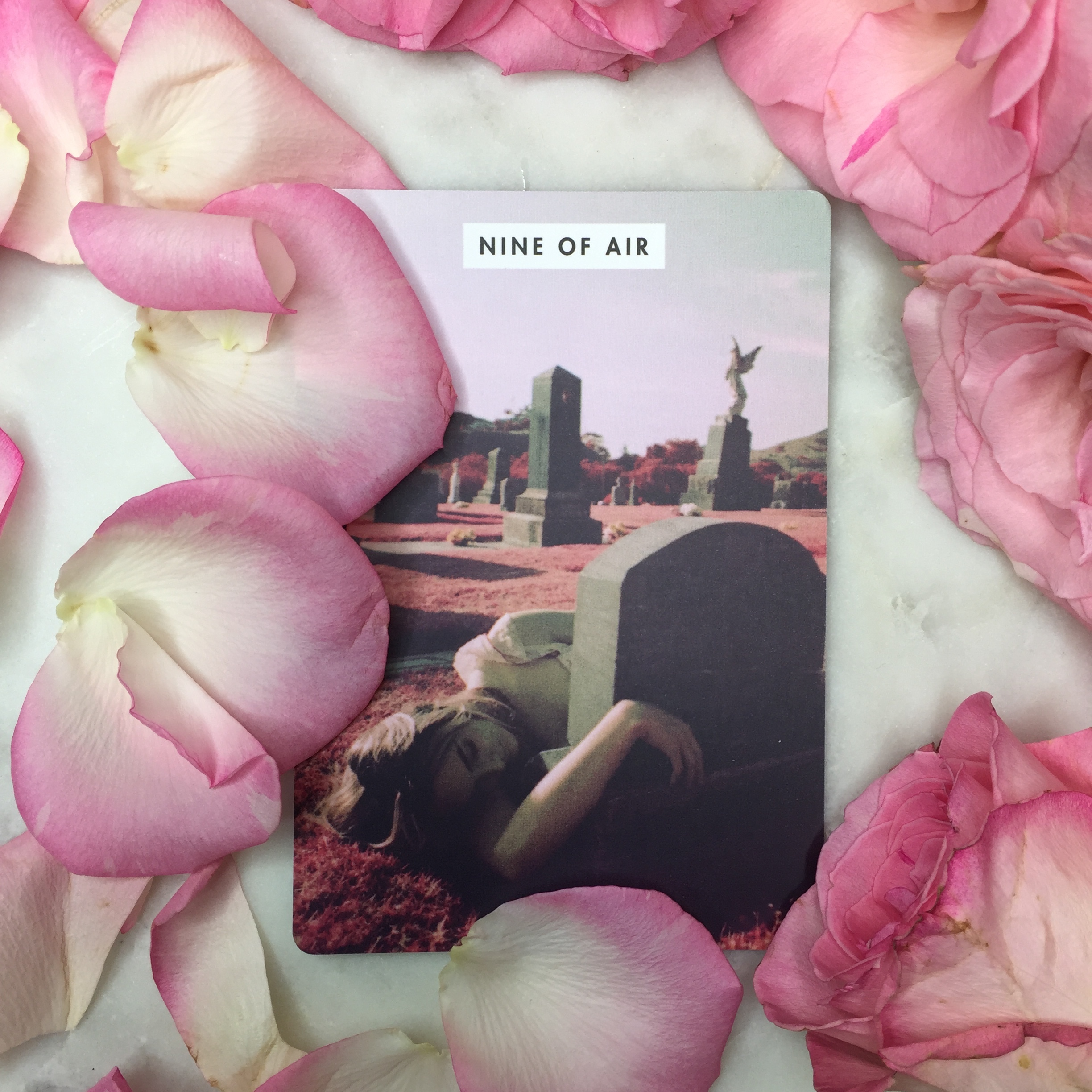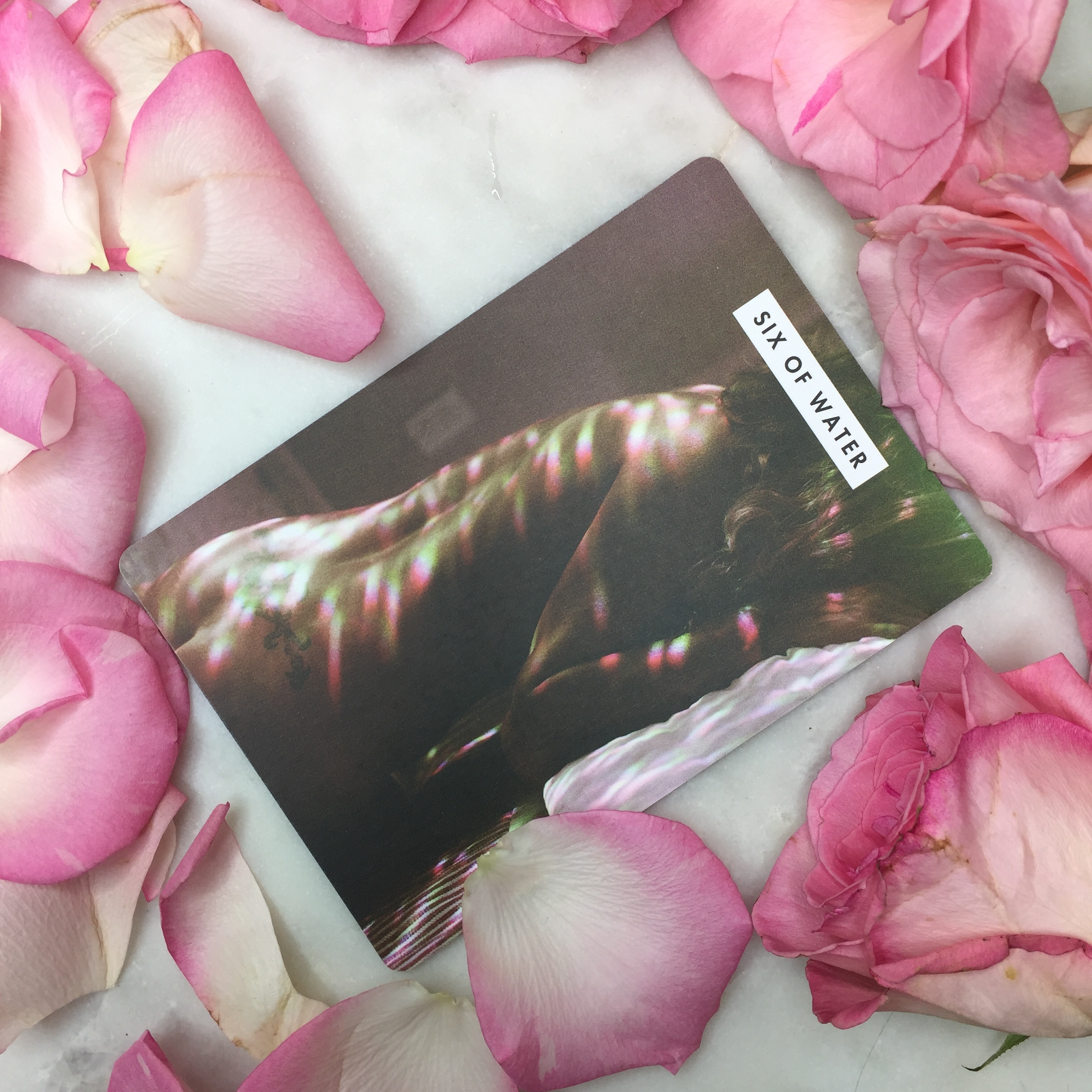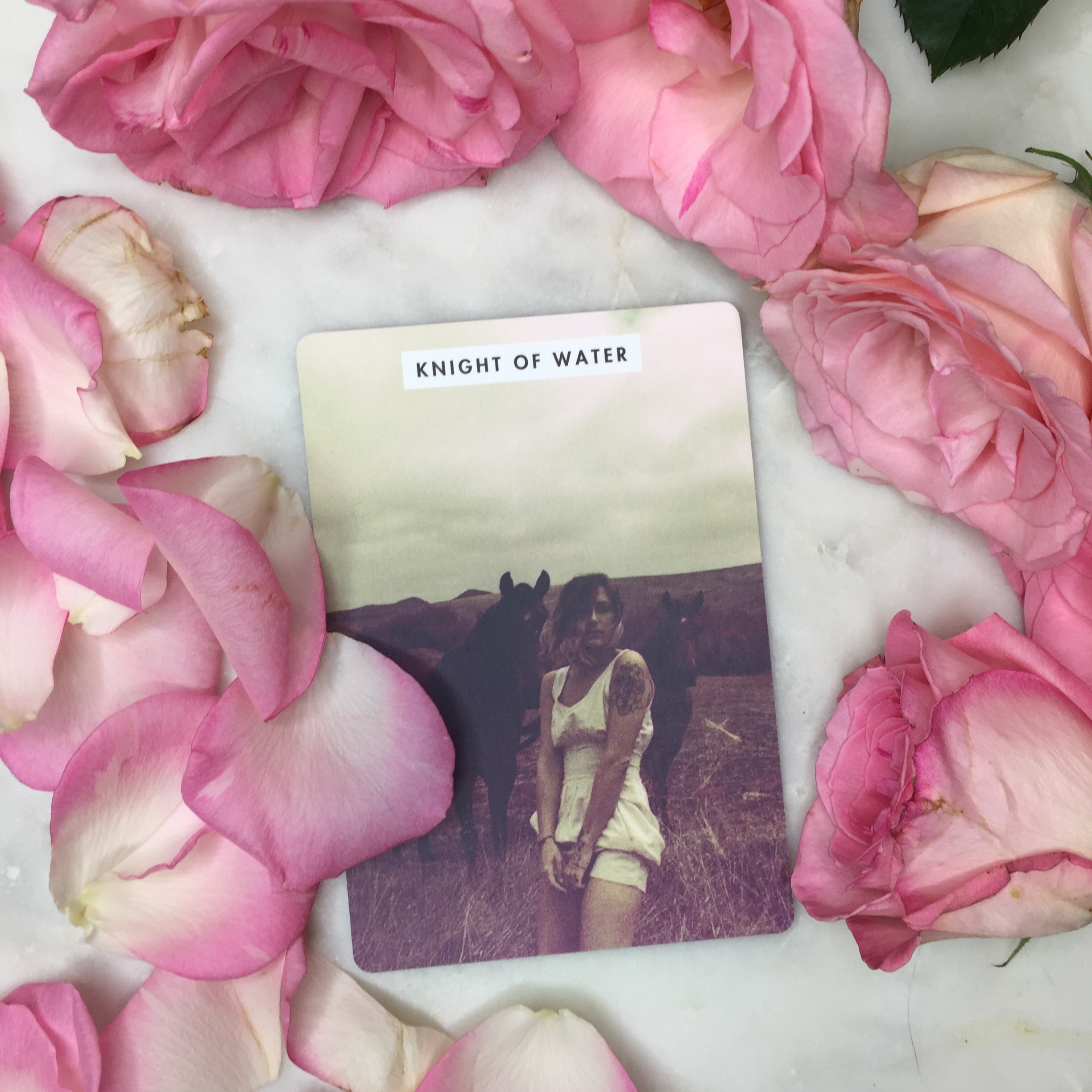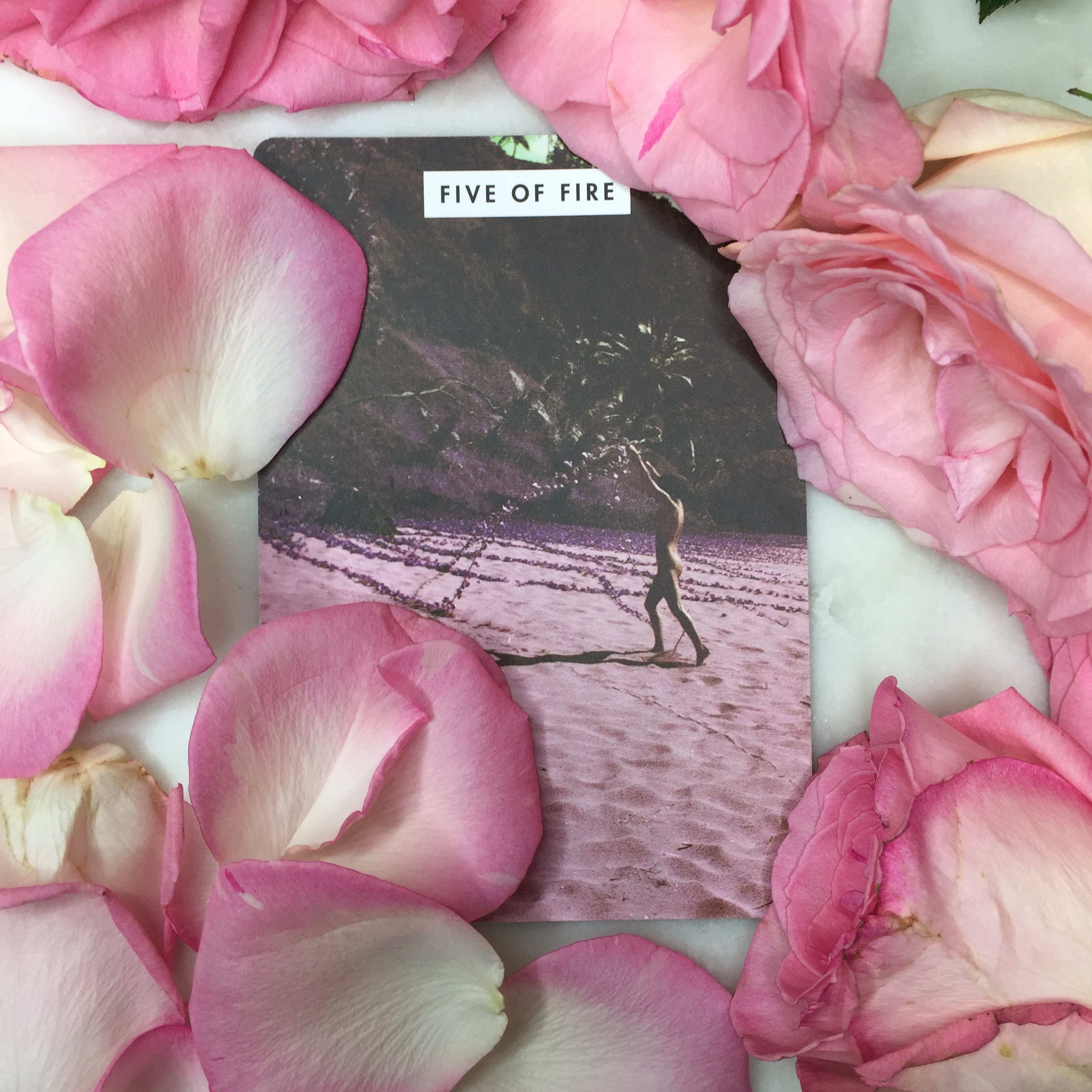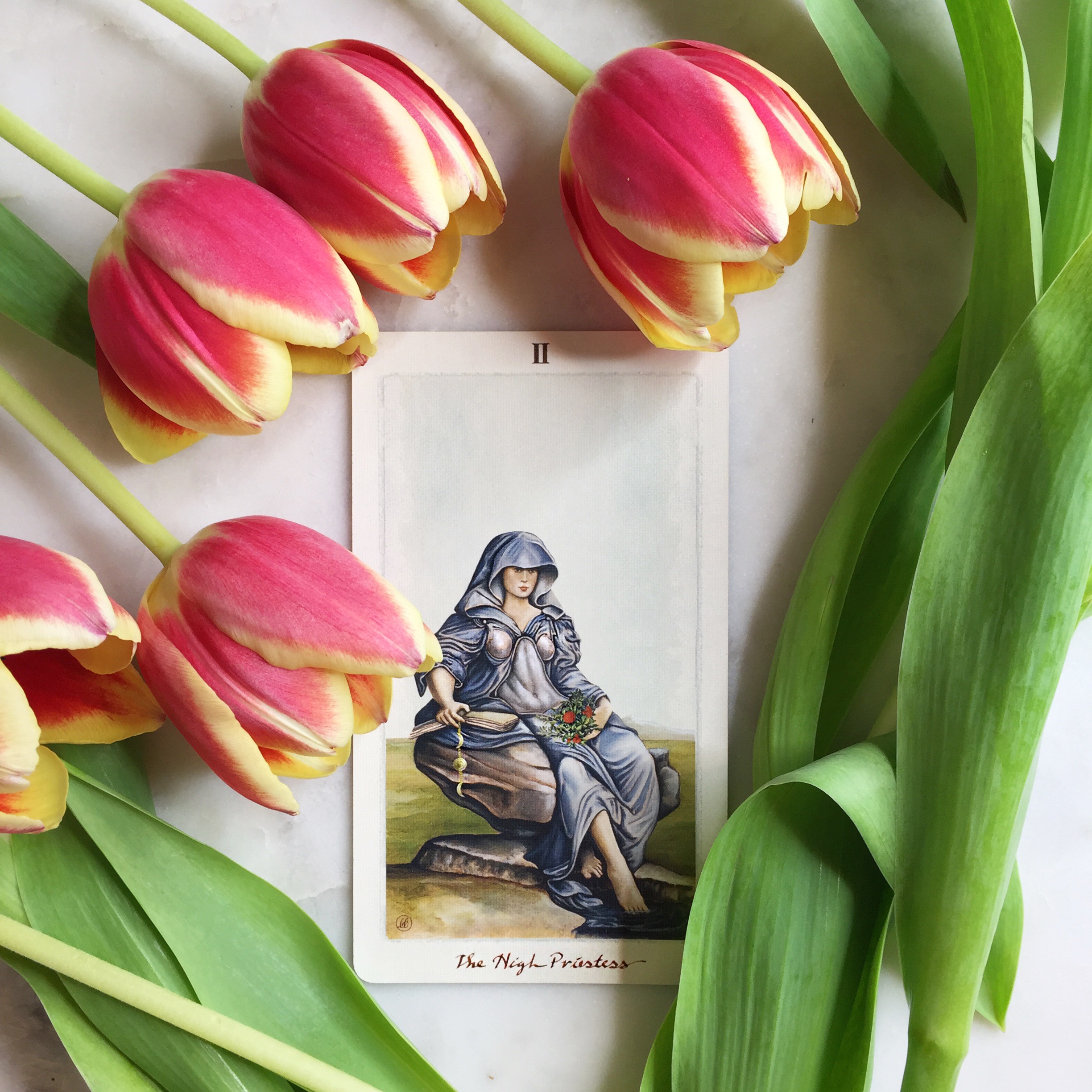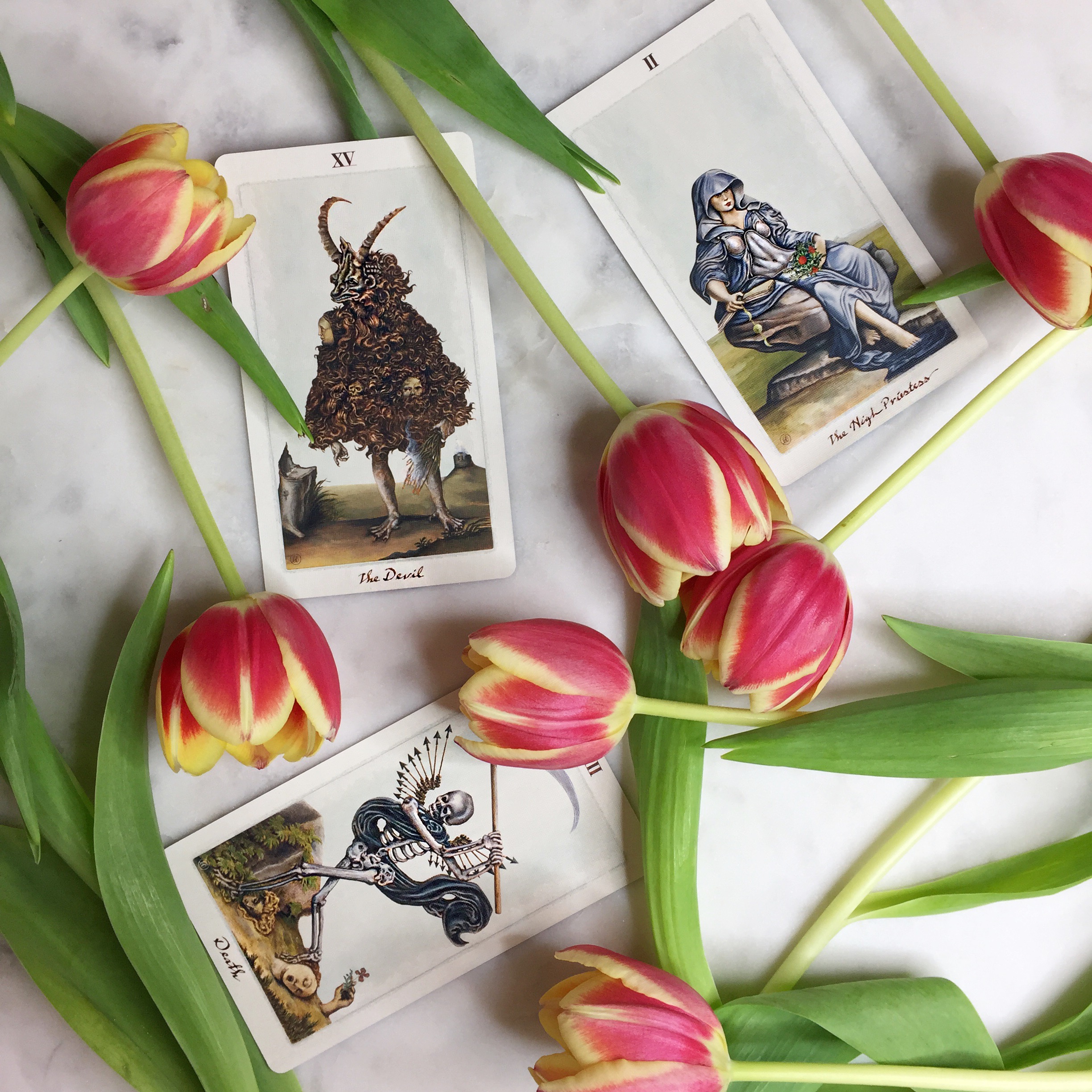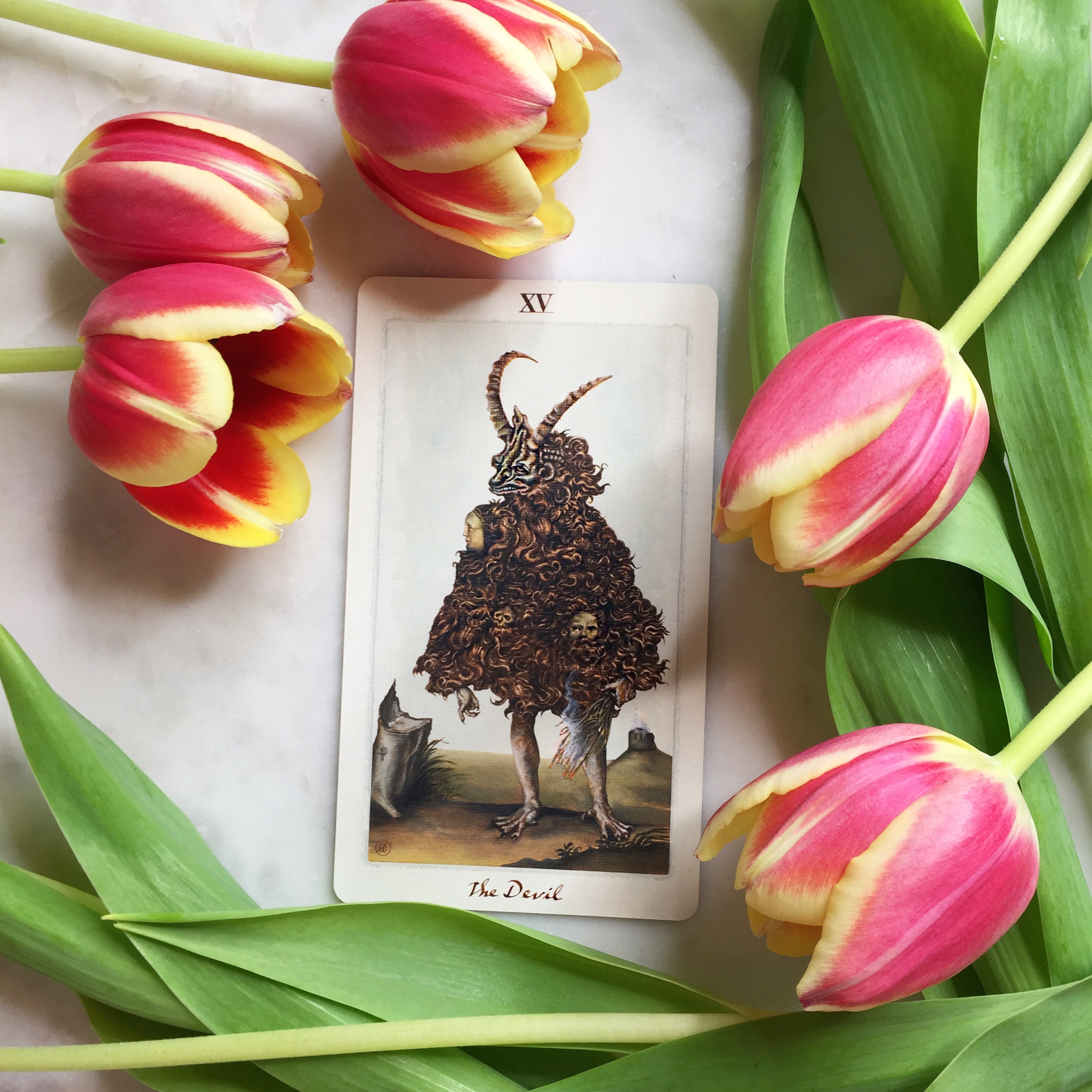The key inspiration behind The Fountain Tarot seems to be light itself. Ribbons of light cascade throughout these images. Sometimes the light is veil-like, obscuring the figures in a luminescent glow. In other cards, the light becomes structure and forms the sacred geometry of glass-like cubes and pointed triangles. Even the silvery gilding of the card edges cast a moon-like glow with each flick of the wrist.
If I could pick one word to describe this deck it would be ethereal. Ethereal is defined as extremely delicate and light in a way that seems too perfect for this world. And indeed you get the impression that inspiration for these images came not from our mundane world, but from some more mysterious force. The figures in these cards are clouded as if they lie just beyond the veil and the images are punctuated by mysterious forms and surrealist structures that draw out your own imaginative thinking.
The subconscious seems ever present in these cards. This is not a deck you can interpret from symbolism alone. These cards beg you to forget the book and tap into your own intuitive force to garner a developed understanding of these images.
The artistic style of The Fountain Tarot will not be for everyone. It’s unique and light-driven aesthetic sometimes feels ungrounded and some may find difficulties connecting with this deck. Regardless of your feelings about the workability, the sheer artistic talent in these images cannot be denied. It’s inspiring to find so many contemporary artists that have chosen tarot as their medium and I look forward to seeing what the creators behind The Fountain Tarot will come up with next.
You can find out more about The Fountain Tarot on their site.
What are your opinions on this deck? Share in the comments below.



